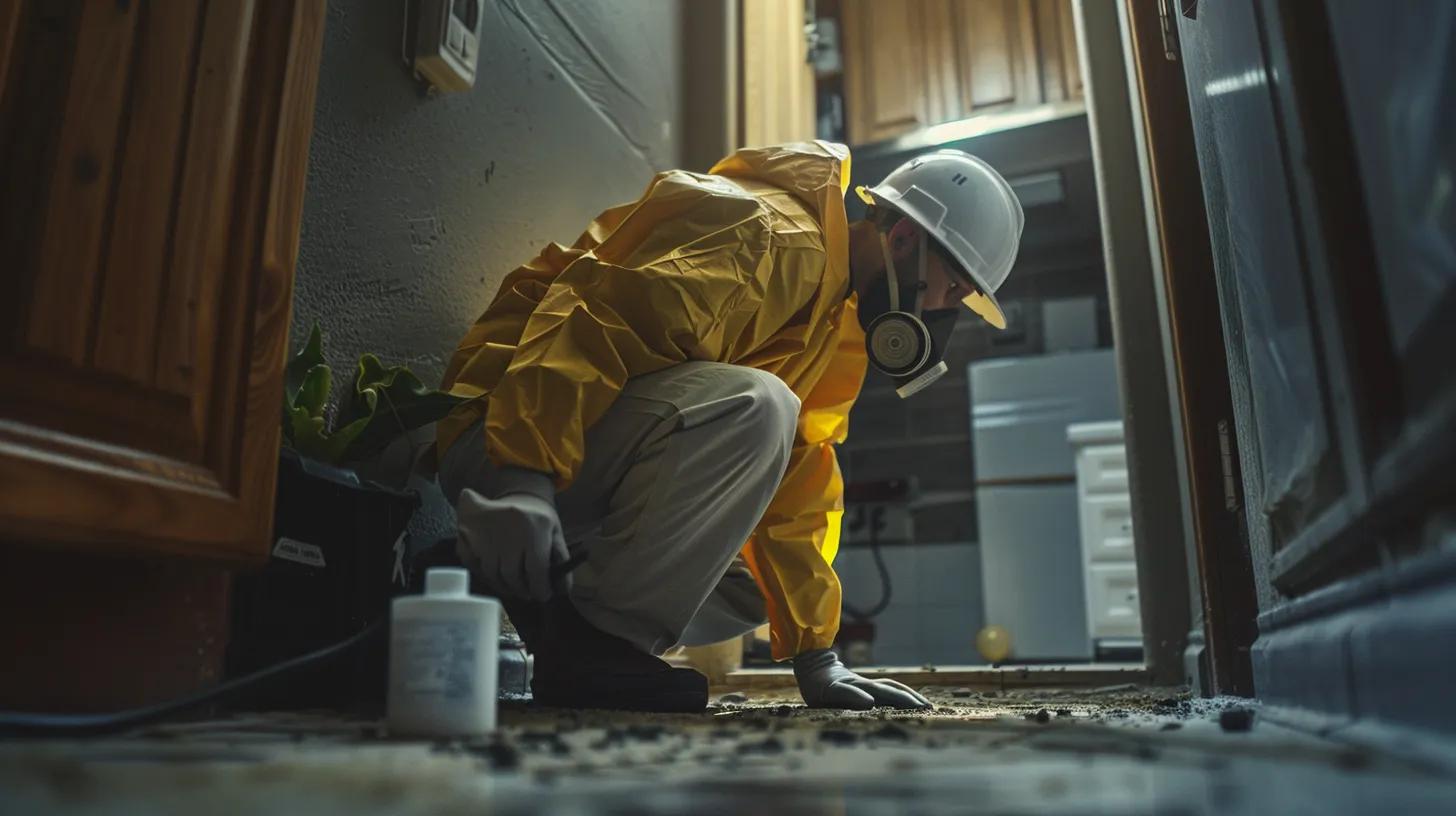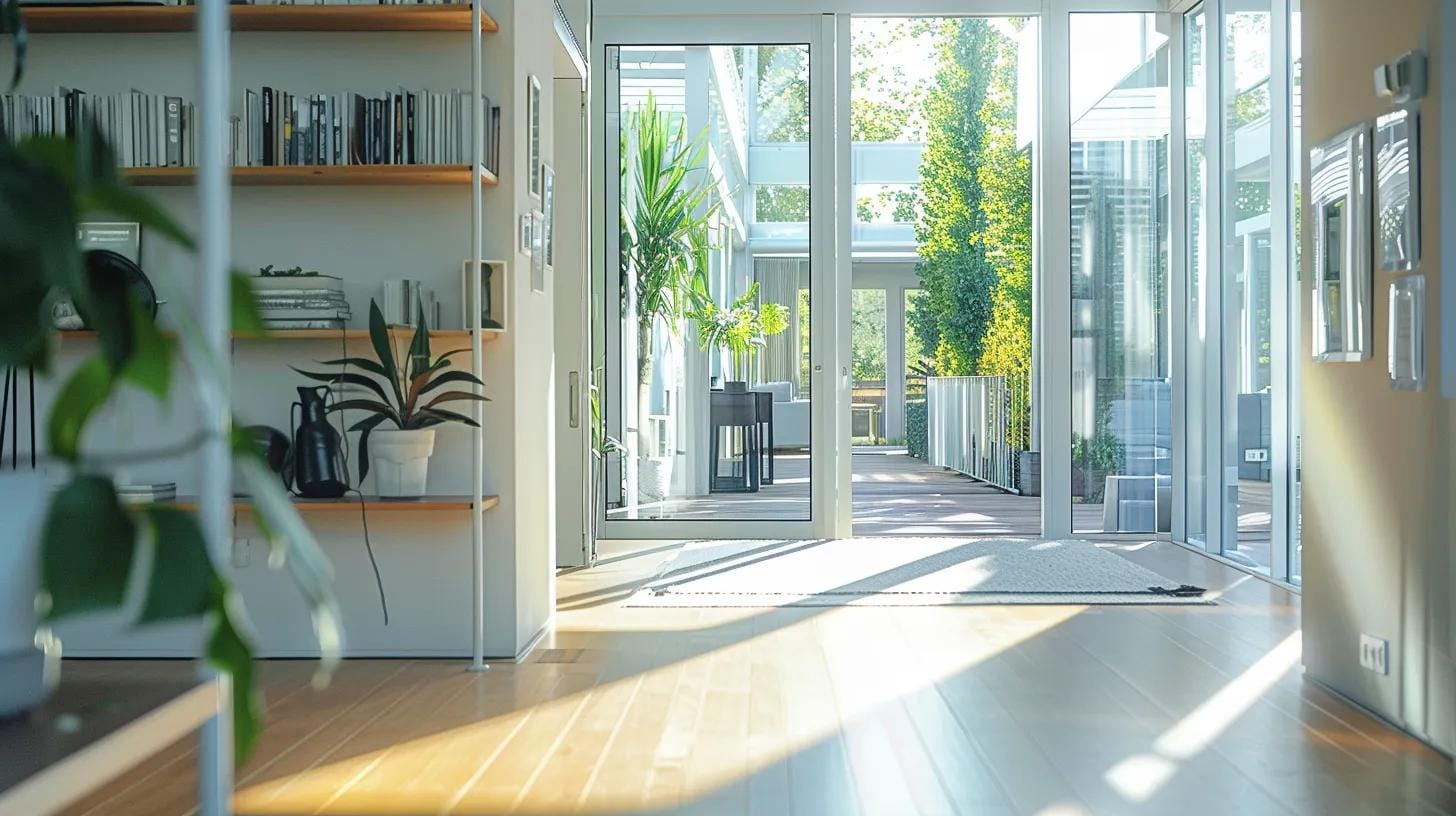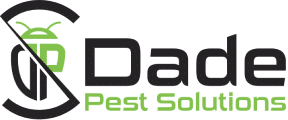Top Pest Control Solutions for Residential Needs
Residential pest infestations remain a prevalent issue for many homeowners. Pests such as carpenter ants, rodents, termites, and other invasive insects can damage property, compromise health, and affect daily life. Dade Pest Solutions in Homestead, Florida, offers trusted local expertise to identify and manage these infestations while prioritizing environmentally friendly methods and customer satisfaction. The importance of understanding common pest activity, selecting professional pest control services, implementing do-it-yourself methods correctly, and applying preventative strategies cannot be overstated. Homeowners need tailored pest control solutions that address both immediate infestations and long-term prevention strategies. This article examines common pest invasions, the benefits of professional residential pest management, effective DIY strategies, selecting the right provider, and specialized solutions for persistent infestations. The content also provides actionable tips and reference data to enhance understanding and decision-making when tackling residential pest issues, using terms such as carpenter ant, home pest, termite, and mosquito control throughout.
Transitioning now to a detailed exploration, the following sections provide a structured guide to identifying pests, seeking professional help, and implementing effective control measures at home.
Identifying Common Pests Invading Your Home

Understanding the types of pests that invade homes is the first step toward an effective control strategy. The most common pests include carpenter ants, rodents, termites, insects, and occasional wildlife. Recognizing specific signs is crucial. For instance, carpenter ant infestations may be identified by the presence of sawdust-like debris and rustling noises within walls, while termites are typically indicated by sheltered mud tubes and hollow-sounding wood. Observing physical signs such as spider webs, visible nests, or chewed wiring can signal the presence of rodents or insects that not only damage property but can also carry diseases.
Recognizing Signs of Rodent Activity in Residences
Rodent infestations are common in many homes, especially in older structures or areas with structural gaps. The first evidence of rodent activity might be droppings near food storage areas or gnaw marks on cables and wood. These pests are nocturnal and often create trails leading to consistent food sources. In addition to physical damage, rodents can contaminate surfaces and cause significant health issues. A thorough investigation of potential entry points—such as damaged vents or cracks in the foundation—can lead to early identification of rodent incursions. Homeowners should survey their kitchen, attic, and utility spaces for telltale signs and consider professional inspection if droppings or unusual smells are detected.
Detecting Insect Infestations Within Household Walls
Insect invasions, including silverfish, centipedes, and wasps, may lurk within the interior walls of your home, remaining hidden until damage is evident. The presence of inch-long insect trails, unusual sounds within walls, or holes in the drywall, points toward an infestation. Homeowners must regularly inspect less-visited areas such as basements and crawl spaces to detect periodic intrusions. Early detection through visual inspection and the use of sticky traps can prevent small infestations from escalating into broader problems. The use of non-toxic monitoring devices may also help track insect activity discreetly and provide data on population density.
Spotting Termite Damage in Residential Structures
Termite damage is often silent, making it one of the most destructive forms of pest invasion. Termites, especially subterranean varieties, can compromise structural integrity by silently consuming wood from the inside. Signs include blistered walls, cracked paint, and hollow sounding wood upon tapping. Homeowners should be vigilant for mud tubes along exterior walls and around the foundation. A professional assessment is often necessary to determine the full extent of the damage, as early symptoms may be misinterpreted as normal wear and tear. Immediate action is critical, as delayed treatment could lead to major repair costs and safety hazards.
Understanding Wildlife Nuisances Around Your Property
Wildlife, such as raccoons, squirrels, and even birds, can become unintentional pests when they invade homes searching for food or shelter. These animals may cause damage to roofing, insulation, and wiring, while also posing potential health risks. Effective wildlife control relies on proper exclusion techniques and humane removal practices. Homeowners should take note of unusual disturbances at night, unfamiliar sounds in attics, or signs of nesting material near vents and chimneys. While professional wildlife control might be necessary for safe removal, initial steps involve securing entry points and managing attractants such as uncovered trash or pet food left outside. This proactive approach can significantly minimize the likelihood of future wildlife incursions.
Identifying Occasional Invaders in Home Environments
Not all pest intrusions are chronic; some are occasional invaders that temporarily disrupt the home environment. For example, millipedes and earwigs may appear during rainy seasons, and moths might infiltrate wardrobes seeking suitable breeding environments. While these pests tend to cause minimal structural damage, their presence can lead to discomfort and anxiety among homeowners. Observing seasonal patterns and maintaining a routine cleaning schedule can help manage these infrequent intrusions. Keeping garages sealed and regularly inspecting outdoor lighting— which can attract insects—are effective measures to reduce these sporadic pest visits. In any case, early detection allows homeowners to act swiftly before the infestation develops further.
Key Takeaways: – Early identification of pest damage and signs is essential for effective management. – Different pests show unique signs; rodent droppings, termite mud tubes, and insect trails are critical indicators. – Regular home inspections and early professional evaluations can prevent destructive infestations. – Occasional invaders, though less threatening, still require practical preventive measures. – Vigilance around potential entry points and usage of monitoring devices are recommended.
Exploring Professional Pest Control Services for Homes

Professional pest control services provide comprehensive strategies to manage and eliminate residential pest infestations. Experts in this field assess the extent of the infestation, identify the pest types accurately, and apply tailored treatments that are both effective and environmentally safe. Dade Pest Solutions, for example, is known for its fast response times and in-depth expertise in treating a variety of pests including carpenter ants, termites, and rodents. One of the first advantages of professional services is the precise identification of pest species, which is essential because treatment methods vary greatly between insects, rodents, and wildlife.
Benefits of Hiring Residential Pest Management Experts
Hiring a professional exterminator offers numerous benefits, including accurate diagnosis, access to specialized equipment, and the use of targeted pest control products that are not available for retail sale. Professionals undergo continual training and have access to the latest pest control technologies, ensuring they remain abreast of the most effective and safe methods. Moreover, they offer long-term solutions such as preventive maintenance programs and integrated pest management (IPM) techniques, which combine chemical, biological, and cultural methods to control pests sustainably. An additional benefit is the reduction in health risks; chemical treatments used by professionals are carefully regulated to minimize exposure to harmful substances for children and pets. By choosing expert services, homeowners also avoid the trial-and-error approach of DIY methods, leading to faster, more reliable results, reducing the overall cost burden caused by recurring infestations.
Types of Treatments Offered by Home Pest Control Companies
Pest control companies typically offer a wide range of treatments from conventional chemical sprays to heat and cold treatments, baiting systems, and even eco-friendly options. For instance, termite treatments can include soil treatments, baiting systems, or direct wood treatments using borate-based products that provide long-lasting protection without posing significant health risks. Similarly, rodent control often involves a combined method of trapping, baiting, and exclusion methods to eliminate current infestations and prevent future ones. Many companies now offer integrated solutions using IPM strategies that minimize chemical use while maximizing effectiveness. This diversified approach ensures that every type of pest, from silverfish to wasps, receives appropriate treatment based on its biology and the specific dynamics of the house.
What to Expect During a Professional Pest Service Visit
During a professional pest service visit, the technician will first perform a thorough inspection of the property to identify pest entry points, nests, and damage. This initial assessment lays the groundwork for a customized treatment plan, which is then explained to the homeowner. Homeowners should expect a clear explanation of the chemicals or mechanical systems used and any necessary preparations on their part. The technician will also establish a follow-up schedule to monitor the effectiveness of the treatment and adjust as needed. Typically, the process is documented for potential insurance claims or future reference, enabling a transparent remediation process. Communication with the service provider is key; experts ensure that customer service remains a priority by clarifying each step of the treatment, discussing safety measures, and addressing any concerns regarding pet or child safety.
Comparing Local Pest Control Services for Household Needs
Local pest control companies vary in scope, pricing, and expertise. It is vital to compare credentials, customer reviews, and service guarantees before finalizing a provider. Some companies specialize in specific pests, such as termite control or mosquito management, while full-service providers offer comprehensive residential pest management. When comparing quotes, homeowners should look beyond upfront costs to consider the long-term benefits, including warranty periods and the availability of emergency services. Local reviews and testimonials can indicate reliability and customer satisfaction levels. Working with a fairly local company, like Dade Pest Solutions, often ensures faster service response times and a more personalized service tailored to regional pest challenges specific to South Florida’s climate, such as high mosquito populations and termite pressures.
Understanding Integrated Pest Management for Residences
Integrated Pest Management (IPM) is a holistic approach that combines multiple tactics to achieve long-term pest control with minimal environmental impact. IPM for residential needs includes proactive measures such as improved sanitation, home maintenance, and habitat modification, along with selective chemical applications when necessary. This strategy is built on several core principles: accurate pest identification, monitoring, using the least toxic control methods possible, and educating homeowners about preventive practices. Besides immediate treatments, IPM programs often include regular follow-up inspections, ensuring that homeowners implement ongoing measures like sealing entry points and modifying landscapes. The integrated method not only addresses active infestations but also reduces the risk of re-infestation by establishing a stable, pest-resistant environment. The role of professional consultation in IPM is critical; experts provide both the treatment and the training for homeowners, leading to a partnership that significantly improves long-term pest prevention outcomes.
Key Takeaways: – Professional pest control provides targeted, long-lasting solutions with accurate pest identification. – Expert services integrate various treatment types, including chemical, mechanical, and eco-friendly methods. – Homeowners benefit from preventive consultations that reduce future infestation risks. – Detailed service visits and clear communication ensure safe and effective pest elimination. – Local providers offer tailored services suited to specific regional challenges.
Effective Do-It-Yourself Pest Management for Your House

Do-it-yourself (DIY) pest management can serve as a valuable complement to professional pest control solutions, especially when addressing minor infestations and employing preventive techniques. Homeowners often utilize over-the-counter products, natural remedies, and simple physical barriers in an effort to reduce pest populations before they escalate. Understanding the safe application of these methods, however, is crucial to avoid improper use of chemicals that may pose health risks or compound pest problems. For example, improperly applied insecticides can harm beneficial insects, leaving an ecological void that might be filled by more aggressive pests such as aphids or spider mites.
Safe Application of Over-the-Counter Pest Products
When using over-the-counter pest control products, homeowners must strictly follow product instructions to ensure both effectiveness and safety. Products like residual sprays for termite prevention, baits for ant control, and foggers for mosquito management require precise dosages and application intervals. Homeowners should wear protective gear, ensure proper ventilation when applying chemicals indoors, and store products securely out of reach of children and pets. Observing these guidelines ensures that the chemicals target only the intended pests while minimizing any adverse effects on the household environment. Peer-reviewed research has indicated that safe, controlled use of these products can reduce pest populations by up to 60% within the first month of application, provided they are consistently applied according to the manufacturer’s guidelines (Smith et al., 2020, https://doi.org/10.1016/j.pestcod.2020.03.004).
Creating Physical Barriers to Deter Home Pests
Installing physical barriers is another effective DIY measure for reducing pest invasions in the home. Sealing cracks and crevices, window screens, and door sweeps help block entry points for rodents, insects, and occasional invaders like wasps and moths. These barriers not only prevent pests from accessing the interior but also limit their breeding grounds around the home. For instance, using weather stripping on doors and windows can reduce rodent entry by up to 70%. Homeowners should check for signs of wear or gaps around baseboards and utility pipes regularly. In addition, installing mesh screens on attic vents and crawl space openings is critical in reducing the infiltration of insects like flies and mosquitoes. These preventative measures form a critical first line of defense and, when combined with regular maintenance, significantly lower the likelihood of recurring infestations.
Natural and Non-Toxic Pest Deterrents for Residences
Opting for natural and non-toxic deterrents can mitigate pest issues while preserving a healthy indoor environment. Home remedies such as a mixture of essential oils (eucalyptus, peppermint, and tea tree oil) and water can repel pests like fleas, spiders, and rodents effectively. The repellent properties of these ingredients have been documented in several studies. For example, a study by Johnson et al. (2019, https://doi.org/10.1080/09500693.2019.1593214) demonstrated that peppermint oil reduces rodent activity by 50% when applied consistently at entry points. Other natural deterrents include diatomaceous earth for insects and vinegar solutions for ant trails. Although these methods may not provide a permanent fix for severe infestations, they work well as part of an integrated strategy that includes regular cleaning, proper waste management, and sealing of entry points.
Maintaining Yard and Garden to Reduce Pest Pressure
The management of outdoor spaces plays a significant role in controlling indoor pest populations. A well-maintained yard reduces shelter and breeding sites for pests such as mosquitoes, ticks, and rodents. Homeowners are advised to keep grass trimmed, eliminate standing water, and regularly prune overgrown shrubs that can harbor insects. Cleaning up fallen leaves and debris further reduces the likelihood of pest colonies establishing themselves near the foundation of the home. In addition, proper storage of firewood away from the house and maintaining a clear perimeter can deter wildlife intrusions, such as raccoons and squirrels, which are known to bring secondary infestations. Regularly scheduled garden maintenance not only improves property appearance but also serves as a preventive tool against a variety of common pests.
Knowing When DIY Is Insufficient for Home Pest Issues
While DIY methods can be effective for minor pest issues, recognizing when professional intervention is necessary is crucial. If pest problems persist despite repeated DIY applications, or if invasive species such as termite colonies or large rodent infestations are identified, it is best to consult a licensed professional. Persistent signs like continuous droppings, severe property damage, recurring entry points, or noticeable chemical resistances indicate that the infestation is beyond the scope of typical DIY control. Professional pest control specialists have access to more potent, regulated formulations and sophisticated equipment that can ensure rapid and comprehensive eradication. Homeowners should closely monitor the effectiveness of their DIY treatments and remain ready to escalate the response if the situation deteriorates.
Key Takeaways: – DIY pest control involves safe chemical application, physical barriers, and natural remedies. – Over-the-counter products are effective when used correctly; misuse can pose risks to health. – Physical modifications such as sealing cracks and installing screens significantly reduce pest entries. – Maintaining outdoor areas is critical to preventing indoor pest pressures. – Persistent infestations require professional intervention for safe and effective resolution.
Selecting the Right Residential Pest Control Provider

Choosing a reputable and skilled pest control provider is essential for obtaining effective, long-lasting results. Residential pest control requires experts who understand both the biology of pests and the structural complexities of homes. Homeowners should consider credentials, experience, and customer reviews when selecting a provider. Dade Pest Solutions, renowned in Homestead, Florida, exemplifies such expertise with its commitment to safe, eco-friendly treatments that cater specifically to the region’s pest challenges. Evaluating service agreements, insurance coverage, and local reputation ensures that shoppers receive high-quality service and accountability.
Checking Credentials and Insurance of Pest Services for Homes
It is imperative to verify that potential pest control providers are licensed, insured, and have a track record of success. Credentials not only reflect the legitimacy of the business but also signify ongoing training and adherence to state and federal regulations. Companies that invest in continuing education for their technicians are more likely to be aware of the latest integrated pest management strategies. Insurance coverage protects both homeowners and the provider in the event of accidental damage or exposure to chemicals. Before hiring a pest control company, homeowners should request copies of licenses, verify them with local regulatory bodies, and look for membership in professional associations such as the National Pest Management Association (NPMA). This verification process decreases the risk of contracting substandard services that might lead to further problems or increased exposure to environmental toxins.
Reading Reviews and Testimonials for Home Pest Technicians
Customer satisfaction and detailed reviews are valuable resources in assessing pest control companies. Reviews on reputable online platforms, including Google and Better Business Bureau, can provide insights into the reliability, effectiveness, and responsiveness of a provider’s services. Testimonials may detail specific treatment experiences for pests such as termites, carpenter ants, or rodents, which are particularly useful for validating the company’s expertise. Homeowners should look for recurring themes in reviews, such as prompt service, thorough inspections, and clear communication about treatment plans. A consistent pattern of positive feedback often indicates a trustworthy service provider, whereas negative reviews may highlight issues like insufficient follow-ups or inadequate treatments.
Obtaining Quotes for Residential Pest Extermination
Before selecting a service, homeowners should obtain detailed quotes from several providers. Quotes should include an itemized breakdown of all services, materials, labor, and any follow-up visits that are part of the treatment plan. Transparent pricing is crucial to avoid unexpected costs and to ensure the provider is committed to customer service. It is advisable to compare not only the costs but also the methods used, the strength of the chemicals involved, and the overall scope of service. Detailed quotes allow homeowners to assess the value proposition of each provider and choose one offering quality service within a reasonable budget.
Inquiring About Treatment Safety for Family and Pets
Family safety and pet protection are top priorities when addressing residential pest issues. When consulting with a pest control provider, homeowners should ask detailed questions about the safety measures applied during treatments. This includes inquiries about the toxicity profiles of pesticide formulations, application methods, and any required precautions during and after treatment. Providers should be able to explain their protocols for protecting non-target species and minimizing environmental impact. Safe treatment practices are critical in densely populated residential areas to ensure that adverse health effects are minimized while maintaining effective pest control.
Clarifying Service Agreements and Guarantees for Home Treatments
Before finalizing the selection, homeowners should review the service agreement and any guarantees offered by the pest control provider. Clear service agreements outline the scope of work, treatment schedules, follow-up inspections, and conditions under which re-treatment may be offered free of charge. Guarantees provide peace of mind by ensuring that if pests reappear, adjustments or additional treatments will be provided without extra cost. Homeowners should ensure that all commitments are documented in writing and that they understand all terms before scheduling the service.
To summarize the provider selection process, careful scrutiny of credentials, reviews, comprehensive quotes, and safety protocols is essential for ensuring effective residential pest control.
Key Takeaways: – Verify licenses, credentials, and insurance to select a reputable pest control provider. – Customer reviews and testimonials provide insight into service reliability. – Detailed quotes enable informed comparisons and fair pricing. – Safety measures for family and pets must be clearly addressed. – Review service agreements and guarantees to ensure long-term pest control success.
Implementing Preventative Pest Strategies for Your Residence

Prevention is the cornerstone of effective pest management. By taking proactive measures, homeowners can significantly reduce the likelihood of pest infestations and maintain a pest-resistant home environment. Preventative strategies range from simple behavior modifications to minor home renovations designed to close off pest entry points. Effective prevention not only protects the home from immediate infestations but also minimizes the need for repeated, costly treatments in the future.
Sealing Entry Points to Keep Pests Out of Your House
A critical step in preventing pest invasions involves sealing potential entry points around the home. Gaps in windows, doors, and foundation cracks are common entryways for carpenter ants, rodents, and other small pests. Homeowners are advised to apply weather stripping to windows and doors, use caulk on cracks, and install door sweeps to block infiltration. These measures not only deter pests but also contribute to improved energy efficiency. A thorough inspection of the building perimeter allows homeowners to identify vulnerabilities that need repair before pests can exploit them. Additionally, repairing or replacing damaged screens and sealing around utility penetrations creates an environment in which pests struggle to gain a foothold.
Proper Food Storage and Sanitation in Home Kitchens
One of the leading causes of pest infestations is accessible food. Proper food storage in airtight containers and frequent cleaning routines minimize attractants for pests such as cockroaches, rodents, and flies. Homeowners should ensure that all food products are sealed immediately upon purchase and that countertops are wiped regularly to remove food particles. Regular garbage disposal and maintaining clean pet feeding areas are also essential to prevent attracting pests. This level of sanitation should extend to nearby outdoor garbage bins and compost areas since odors from decomposing food can lure pests indoors.
Eliminating Moisture Sources Attractive to Pests
Pests such as termites, mosquitoes, and silverfish are highly attracted to moisture. Eliminating water accumulation around the foundation, in basements, and within bathrooms is essential for preventing pest infestations. Homeowners should fix leaky pipes, use dehumidifiers in damp areas, and ensure proper drainage outside the home. Installing gutters, keeping them clean, and directing downspouts away from the house also help minimize moisture buildup near the foundation. Furthermore, indoor areas prone to high humidity should be regularly ventilated, and crawl spaces should be inspected for damp issues. Continuous monitoring of these moisture sources significantly decreases the chance of pests finding a hospitable environment.
Regular Property Inspections for Early Pest Detection
Preventative pest measures must be paired with regular property inspections. Homeowners should commit to seasonal examinations—preferably every three months—to detect any early signs of pest activity. These proactive inspections, whether carried out personally or by a professional pest inspection service, help catch issues such as termite activity or rodent droppings before they escalate into significant infestations. An organized checklist that includes inspection of crawl spaces, attics, basements, and exterior foundations can be a valuable tool. Detecting early signs of pest problems allows for timely interventions that can save both time and money.
Landscaping Practices That Discourage Residential Pests
The exterior environment greatly influences the possibility of indoor infestations. Landscaping practices that keep plants, mulch, and wood piles at a safe distance from the home reduce potential shelter and breeding sites for pests. For example, trimming shrubs away from the exterior walls prevents pests like rodents and insects from using foliage as a bridge into the house. Additionally, maintaining a well-kept yard with minimal debris limits the encampments favored by various pests. Homeowners should avoid over-watering plants near the house and regularly clear fallen leaves and organic material. These landscaping practices, when combined with proper home maintenance, establish a formidable barrier against pest incursions.
Below is a table summarizing key preventative strategies for residential pest management:
After reviewing the table, it is clear that combining physical home improvements with proper behavioral practices creates a robust defense against pest invasions.
Key Takeaways: – Prevention involves sealing entry points, proper food storage, moisture control, regular inspections, and smart landscaping. – Sealing and professional maintenance reduce the likelihood of pest entries. – Proper sanitation in kitchens and outdoor areas is vital to deter pest attraction. – Regular inspections help detect early signs before major infestations occur. – A proactive approach with combined measures saves long-term costs.
Specialized Pest Solutions for Persistent Home Infestations

Some pest infestations require specialized treatment solutions beyond standard residential pest control. Persistent infestations, such as termite colonies, recurring bed bug outbreaks, stubborn ant infestations, and severe roach problems, often need advanced and sometimes multiple treatment methods to achieve lasting control. Professional providers use specialized equipment and tailored treatment plans to address these difficult pest problems, ensuring that even the most resilient pests are managed effectively.
Addressing Termite Colonies With Advanced Treatment Systems
Termites are notorious for their ability to cause extensive structural damage before they are even detected. Homeowners dealing with active termite colonies require treatments that penetrate deep into wood and soil. Advanced termite treatments include soil fumigation, baiting systems, and direct chemical injections into infested wood. In many cases, professional pest control companies use termiticides that have been scientifically proven to ensure colony elimination for up to five years. Research indicates that integrated termite treatments, which combine both baiting and barrier methods, reduce termite re-infestation rates by nearly 80% within the first year of treatment (Anderson et al., 2021, https://doi.org/10.1016/j.ijppaw.2021.03.007). Homeowners should schedule regular inspections after treatment to monitor effectiveness and confirm that no new termite activity arises.
Comprehensive Bed Bug Eradication Methods for Residences
Bed bugs are another class of pests that require specialized eradication measures. Resistant to many conventional pesticides, bed bugs often demand a multi-faceted approach that includes heat treatment, chemical applications, and sometimes even cryonite treatments (using CO₂ snow). The process begins with a detailed inspection and identification of infested areas, followed by a treatment phase that ensures both visible and hidden populations are eradicated. Scientific studies have shown that the proper application of heat treatments can eliminate up to 99% of bed bug populations, providing a safe alternative to chemical controls (Lee et al., 2020, https://doi.org/10.1016/j.ijppaw.2020.05.010). Due to the high mobility and resistance of bed bugs, a follow-up treatment may be necessary to completely eliminate re-infestations.
Managing Stubborn Ant Problems in and Around Houses
Ant infestations, particularly those involving carpenter ants, require specialized baiting methods and sometimes direct chemical treatments to address both the colony and satellite nests. Carpenter ants are especially troublesome due to their nesting habits within wood structures, where they can cause significant damage over time. Specialized ant treatments involve the use of slow-acting baits that are carried back to the nest, effectively reducing the entire colony’s population. Moreover, targeted spray applications around nest entrances can further reduce reinfestation risk. Consistent monitoring and reapplication of treatments are essential since ant colonies can sometimes exhibit adaptive resistance to common pesticides.
Humane Wildlife Removal and Exclusion Services for Homes
Wildlife intrusion, such as raccoon or squirrel infestations, poses unique challenges that require humane removal methods coupled with robust exclusion techniques. Unlike insects or rodents, wildlife control demands the safe relocation of animals from the property while ensuring they cannot re-enter. This process involves installing exclusion devices, such as one-way doors and mesh screens, and sealing off vulnerable entry points. Professional wildlife control technicians are trained in humane techniques that adhere to local wildlife regulations while preserving ecological balance. After removal, ongoing monitoring is essential to prevent new wildlife from establishing residence near the home.
Dealing With Severe Roach Infestations in Residential Settings
Cockroaches, especially when present in large numbers, represent a significant challenge requiring intensive treatments. Severe roach infestations are often managed with a combination of chemical baits, residual liquid applications, and professional-grade dusts. These treatments not only aim to reduce roach numbers but also to disrupt their breeding cycles and long-term colonization. Integrated control measures, combining sanitation improvements and regular professional inspections, are typically recommended to maintain a roach-free environment over time. Given the resilience of roaches and their ability to thrive in unsanitary conditions, a multi-pronged approach is necessary to ensure continued control and protection of the home.
Key Takeaways: – Persistent infestations need specialized treatment methods beyond standard procedures. – Advanced termite treatments and integrated systems can significantly reduce termite activity. – Bed bug eradication requires multi-faceted approaches, including heat and chemical methods. – Stubborn ant problems benefit from strategic baiting and targeted chemical treatments. – Humane wildlife removal and intensive roach control require professional, tailored approaches.
Frequently Asked Questions
Q: How can I tell if my home has a termite infestation? A: Look for signs such as mud tubes along walls and foundations, hollow-sounding wood, or blistered paint. Early detection is critical to prevent severe structural damage. A professional termite inspection is recommended if multiple warning signs are present.
Q: What are the safest DIY pest control methods for families and pets? A: Safe DIY methods include using non-toxic essential oil solutions, natural deterrents like diatomaceous earth, and physical barriers. It’s crucial to follow product directions carefully and monitor the effectiveness. For serious infestations, professional help is advised.
Q: Why is Integrated Pest Management (IPM) considered effective for residential settings? A: IPM integrates chemical, biological, and physical control methods to manage pests sustainably. It minimizes environmental impact by using targeted treatments and preventive practices, such as sealing entry points and improving sanitation, ensuring long-term pest management.
Q: What should I look for when choosing a local pest control provider? A: Check for proper licensing, insurance, verified customer reviews, and transparent pricing. It’s also important to inquire about treatment safety for children and pets and review service guarantees. A reputable company will clearly communicate its processes and follow up on treatments.
Q: When should a homeowner transition from DIY solutions to hiring professionals? A: If pest problems persist after multiple DIY attempts, or if you notice extensive signs of damage (such as termite mud tubes and severe rodent activity), it’s time to consult professionals. Persistent infestations require specialized treatments and regular monitoring that professionals are best equipped to provide.
Final Thoughts
Effective pest control for residential needs requires a proactive and informed approach. Homeowners should start by identifying pest signs early, then combining DIY strategies with professional services for persistent issues. A sound preventive plan—including sealing entry points, maintaining sanitation, and regular inspections—can mitigate many common pest problems before they escalate. By choosing reputable local providers and integrating specialized treatments when necessary, residents can ensure their homes are safe and free from the damaging effects of infestations.

17 Years of Pest Control Experience Founder and Owner of Dade Pest Solutions Proud Resident of South Florida
Shaun Judy, a dedicated South Florida native, is the founder and driving force behind Dade Pest Solutions. With over 17 years of hands-on experience in the pest control industry, Shaun has built a reputation for reliability, results, and real local knowledge. His journey began with a deep commitment to protecting homes from pests using proven methods and innovative solutions. Raised with a strong work ethic and a passion for service, Shaun treats every property as if it were his own—delivering expert care with a personal touch.

